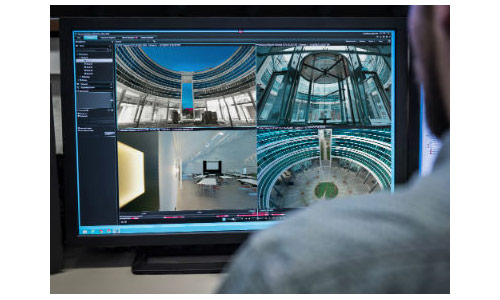Saving Money and Enhancing Security on Your Campus
Integration, training and developing buy-in are just three ways campuses can save on resources.

Schools, universities and hospitals can’t achieve their larger goals if they’re not able guarantee the safety of their communities. But ensuring safety on a campus can require significant resources, and making the case for a bigger budget can be difficult.
“Because a lot of what [security teams] do is preventive in nature, their funding and the justification for that funding is not always easy to validate quantitatively,” says Thomas Komola, a campus security veteran who during his 14 year tenure ran MIT’s security and management office.
These days Komola works as the business development manager for higher ed and healthcare at Siemens.
Below Komola gives some ways to save money while improving the security of a campus.
Automation, Efficiency Save Time
Labor costs are the number one driver of security budgets. That’s why security systems that automate certain tasks and improve officer productivity can bring such a high return on investment.
“It’s about getting better value out of those labor costs,” Komola explains. “Using any of the Siemens systems, events that have certain items within a set of tasks can be automatically handled, leaving operators to concentrate on other, more pressing or important actions.”
Some systems are also designed for efficiency. A good example of this is Siemens access control solution SiPass® integrated. The Venue Management feature allows for quick authorization and scheduling of secured rooms (such as labs, computer facilities, etc.) without all the necessary steps other systems require.
Another good example is the Siemens Desigo® CC building management system. The Desigo CC allows facilities and security operators to see all building systems on one system, making it easier to have a total building management system rather than many individual ones. These systems are unique to Siemens.
The Desigo® CC Mass Notification System allows operators to alert different sections of the campus community with prescriptive messages through pre-set channels. This reduces confusion and can greatly improve emergency preparedness.
Integration Goes a Long Way
Administrators need to understand what every security system on their campus is doing, a task that’s much more difficult with fragmented, standalone systems. When an incident occurs or an alarm is triggered, emergency managers must have the ability to quickly gather the information they need.
“If it’s a toxic gas alarm, managers need to be able to answer: Do we have victims in the area? Do emergency personnel need to suit up and rescue them, or can there be a more controlled and methodical approach? What is the current status of ventilation systems, fume hoods, exterior exhaust?” Komola explains. “Good information in a timely manner saves lives and protects valuable assets.”
Siemens PSIM solutions like Siveillance™ Viewpoint can integrate multiple safety and security systems into one platform, and the Siveillance Vantage is designed to be able to integrate even larger, more complex systems. The systems go even further by providing situational awareness to provide automated and manual Standard Operating Procedure support to operators handling events so all situations are handled efficiently and appropriately.
Other Ways to Save Money While Improving Security
Getting the campus community to support safety initiatives and security systems is another important (and often inexpensive) way to bolster the security of an institution.
Campuses often struggle, for example, with the problem of propped-open doors. Getting the community to understand why it’s important for such doors to be closed is a crucial step toward eliminating vulnerabilities.
Training officers to look for things like pre-attack indicators and concealed weapons can also improve security by leaps and bounds. Komola notes that such training complements existing security systems.
“Immediate situational awareness can provide information that may not be readily available in other systems and therefore provides the operators a way to analyze any other issues that may arise during an incident,” Komola explains.
Campus officials should also always be exploring ways to improve their relationship with students, the surrounding community and local law enforcement agencies…an approach that might not cost a cent. Finally, partnering with the right vendor can go a long way in saving on infrastructure costs. Siemens can even provide financing through the Siemens Financial Group and provide remote monitoring and management.
Employees at Siemens work hard to teach customers the many benefits of this type of relationship.
“We want to clearly show that our customer’s outlay has a measurable cost savings and thus a return on investment worthy of their trust and investment,” Komola says. “By learning how our customer’s business operates, Siemens is able to provide the right systems for cost effective solutions.”
Learn more at siemens.com.

If you appreciated this article and want to receive more valuable industry content like this, click here to sign up for our FREE digital newsletters!
 Leading in Turbulent Times: Effective Campus Public Safety Leadership for the 21st Century
Leading in Turbulent Times: Effective Campus Public Safety Leadership for the 21st Century
This new webcast will discuss how campus public safety leaders can effectively incorporate Clery Act, Title IX, customer service, “helicopter” parents, emergency notification, town-gown relationships, brand management, Greek Life, student recruitment, faculty, and more into their roles and develop the necessary skills to successfully lead their departments. Register today to attend this free webcast!







